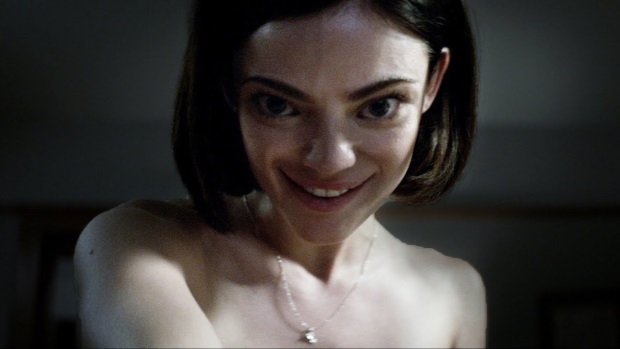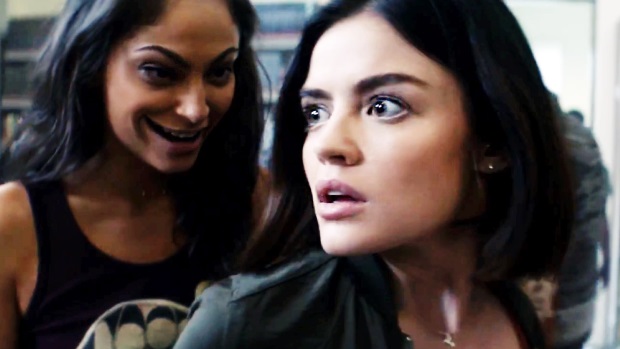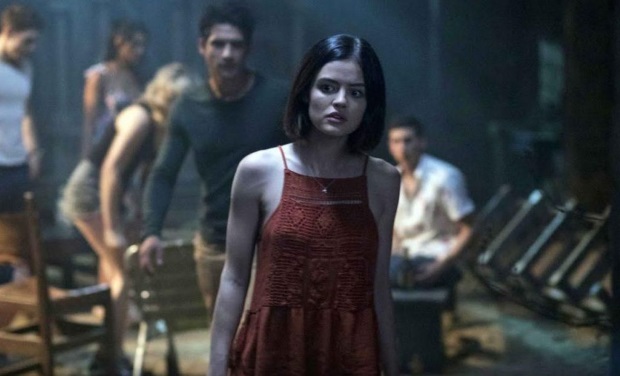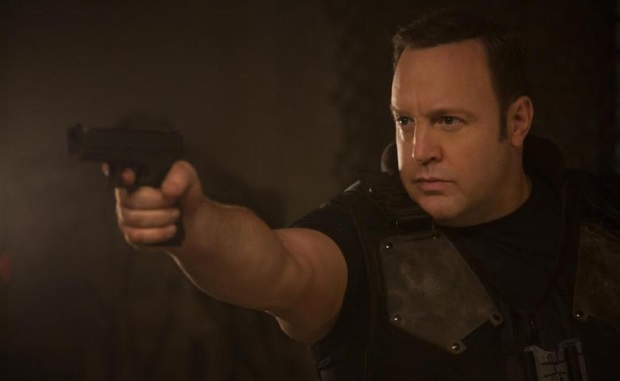Jeff Wadlow interview: Truth Or Dare
Jeff Wadlow chats to us about his new film, Truth Or Dare, oral surgery
“I guess I have quite an evil smile.”
Thank goodness Jeff Wadlow has found work making horror films. There are few careers where an evil smile would be considered a career asset. Positions as a Bond villain are few and far between, and even then it’s perilous work. During our chat I found him too personable and friendly to be a politician, so that’s off the list too. As a horror director, you can be nice to everyone and still share a demonic grin whenever you please. Perfect.
Den of Geek caught up with writer/director Jeff Wadlow, who’s promoting his new Blumhouse horror film Truth Or Dare. We didn’t get to experience that evil smile in person as this interview was conducted over the phone, but we did get to grill the director on all things Truth Or Dare, Blumhouse, Netflix and, er, He-Man. Here’s how we got on.
When did you become involved in Truth Or Dare?
I had a general meeting with Jason Blum, we hit it off and he said “If you ever have a low budget script you wanna make, bring it to me and I’ll greenlight it. I love you and I love working with filmmakers that I like who have made movies before, but I give you a very small budget and I let you do what you wanna do. So let’s do it.” And I said “Ok, that sounds intriguing.”
Then I was working on a Netflix movie and he contacted me again and he said there was an opportunity, Universal really wants to make a movie called Truth Or Dare and if you can write the script and make the film there’s a good chance it’ll get a wide release.
I said “You don’t have a script? You don’t have a storyline?” and he said “No, just a title.” And so I pitched him that opening scene on the spot, you know that scene in the gas station where the Giselle character sets that woman on fire? He got really excited, like “That sounds really cool. What else have you got?” and I said “Nothing else yet, I just made that up here!”
So I called up my writing partner Chris Roach who wrote the Liam Neeson movie Non-Stop for me and I sort of pitched him the general idea and he got excited and he asked if he could bring Jill Jacobs in, his wife who he had been writing with, and I said “Sure” and the three of us worked out the story and wrote the script in a couple of months and then we were in production very quickly.
One of the things I wanted to ask you about that’s perhaps a little sillier, you have, particularly in your opening credits, some Snapchat filters and stickers. Does that stuff get included at the scripting stage? I’m in my 30s and I don’t really know about Snapchat stickers, so how did you work that out? Did you have a youth consultant or something?
[Laughs]
Yeah, I mean, I’m certainly not in Snapchat’s target demographic either, but as a fan of popular culture and I guess as someone who is sort of inquisitive by nature, I’m always asking questions and curious about what’s new, what people are doing. I’d seen a lot of Snapchat filters, mostly on Instagram honestly, and I found them kind of disturbing. Especially the ones that make your eyes bigger and change the proportions of your face. I found it kind of off-putting and unsettling. There’s something about our faces.

I’m taking a deep dive here Matt, so bear with me. When I was a kid I had to have my jaw broken, I had to have oral surgery, and it affects you when your face is traumatised or altered because, I think, we live inside of our heads. So when I would see these Snapchat filters I would find them kind of disturbing on a very primal level. When I was starting to think about the demon’s look, I didn’t want to do something typical like the milky eyes or the black veins. We’ve seen that a million times. I wanted to do something unique for our film, something different.
I also started thinking about the spirit of the game. Not just the demon, but literally the spirit of the game. When people play this game they’re exacting a spirit of mischief, and we’ll need to reflect that mischief in our look, and it was just kind of a perfect storm and it all came together. It allowed me to do this kind of Snapchat filter mischievous evil smile look for our demon.
And then this other thing happened that I didn’t even think about. This is another question, but I’m just gonna keep going. After we showed the movie for the first time to an audience this woman walked up to me and said “Oh, the smile, it’s your smile isn’t it?” I guess that I have quite an evil smile and so people have accused me of using my own smile now.
Something that’s interesting to me about filmmaking as an outsider is how you communicate something visual, like that smile, to an effects team or to whoever else. Even in your script, how do you communicate specifically what you’re looking for?
Well, as a writer/director I have a real advantage in that I don’t have to communicate it too literally in the script. There’s a great quote, that screenwriting is the art of efficiency. So I try to use as few words as possible, I often write in sentence fragments. I just do whatever it takes to create a feeling in the reader. Because to me a screenplay is much more about a feeling than it is about a literal description of what’s on screen.
For example, I love reading screenplays written by Shane Black, he basically invented that idea; it’s not about what you see, it’s about what you feel. So he creates feelings with his descriptions. I try to do the same thing.
Then as a director I know that I’ve got to work that out visually. I don’t need to worry about putting that in the screenplay because I already have it in my head. I just need to create a feeling for the reader.
So once we start getting into the actual visualisation, you’ve got to do your advance work, you’ve got to do your prep work, you’ve got to do your concept work. I think the first time we talked about that smile I drew it, basically. I said this is what I’m thinking, and I drew a face with a smile. Then I started pulling reference from everything from Jack Nicholson’s Joker to the Black Hole Sun video by Soundgarden. I started showing images. I went online to Google images and I searched ‘evil smile’ and I looked for things. Then I showed those to my visual effects supervisor, I showed them to a concept artist.
Then we shot a test. I got some actors together, we set up a camera. I shot some different angles and some camera moves. I was already thinking about ‘how does the smile arrive on their face?’ and I don’t know if you remember the detail, but many times I kind of swooped behind someone’s head. The camera goes behind the person’s head and on the other side the smile is already there. That was an idea that I came up with during the camera test. I gave the footage to the visual effects supervisor, and he started manipulating it and showing me different things.
So by the time we actually shot the movie I had a pretty good idea of how I was going to execute it and whether it was going to work.
But then the final piece came into play, which was the performance. Every actor actually performed it differently. There wasn’t just some mathematical filter they just put on every person that made the smile look the way I wanted it to look. Some people performed it in a way where we had to actually manipulate it very little, if at all. There are a couple where I think we ended up tweaking it some, but not much. Then there were other actors where we basically had to create the whole smile on their face, what they were doing on the set wasn’t really working. Not that they’re bad actors, it’s just probably my feeling as a director, or it might just come down to pure anatomy, that their face just naturally didn’t do what I needed them to do. It varies.
To me, that is the filmmaking process. You have an idea, you start to figure out ‘how am I gonna execute this idea?’, but then you have to start dealing with the reality of performers, of your resources, of the space that you’re in, and you have to embrace the reality and try to use it to advance the idea that you have. But ultimately you have to own the final version, which is a result of both this concept that you might have had being fused with the real situation that you’re documenting.

The movie is PG-13 in the US. I wonder, when in the process is that decided and what is the process behind that decision?
From the beginning, I knew that I wanted it to be PG-13. I certainly wrote and shot a PG-13 movie. There were a couple of moments I was surprised the ratings board took issue with and other moments I was surprised they didn’t take issue with. Because, certainly, I was trying to push it. I think, if you’re gonna make a PG-13 movie, you want it to be the hardest PG-13 movie you can possibly make. If you’re gonna make an R rated movie, you want it to be the hardest R rated movie you can possibly make so you’re delivering for the audience, so they’re getting the most bang for their buck.
That’s certainly the way I did Kick Ass 2, I tried to make it as hard R as possible because I knew from the beginning that that would be a rated R movie.
I felt that Truth Or Dare should be a PG-13 from the beginning because ultimately it’s a movie about a game, and it’s a game that you play when coming of age. And I thought it would be of service to the film to not limit its availability to people who were coming of age. I think it works for an older audience as well, because they remember the game and I think we’re dealing with some interesting characters and some mature ideas and themes, but at the same time I didn’t want to prevent people who were actively playing the game right now from seeing our film.
Sure, that makes perfect sense.
So, this is a Blumhouse film and their thing is, small budgets that allow for greater creativity and less pressure. But that doesn’t feel so valid now, the less pressure part, because you’re following Get Out and Happy Death Day. How is it to follow those movies out under the Blumhouse label?
You sort of don’t really think about it. You just have to make the best movie you can make.
I mean, when they were making Get Out they had no idea what they were making. I know, because I was talking to them before that film was released. They had a feeling it was special, and they certainly believed in Jordan and knew that he was an incredible talent, but they had no idea that movie would be embraced to the extent it was embraced. Not because they’re short sighted but because nobody knows. There’s a famous William Goldman quote about Hollywood, nobody knows anything. I’m sure I’m paraphrasing there. But it’s all guess work until the movie’s out there and an audience decides how they feel about it.
And by the way, the timing affects it as much as the film itself. When it’s released, what’s going on in the world. Often with films that enjoy phenomenal success it’s a perfect storm of both the film and where we are as a society and what we are willing to embrace in that given moment. And I think Get Out was a film with a real moment.
Happy Death Day, that’s a script that had been around forever. I read it set-up at a different studio before Chris Landon rewrote it, and obviously he did a great job with the rewrite and I love the film, it’s so clever and smart. But they had a great weekend with not a lot of competition and it was received really well.
So when I made my movie I didn’t think about those other films. I just wanted to make the best movie I could make. I wanted to make the most enjoyable experience for the audience. I wanted a film that, when all was said and done, I would feel like I had done everything that I could to make the best movie possible and that people would be proud that they worked on the film for a handful of months and that I would be proud that I spent a year of my life working on it. Then just cross my fingers and send it out into the world, and then whatever happens happens.

How is seeing it with an audience?
We’re in the middle of a college tour where we’re showing it to 50 universities around the US. It’s been received very well, people are really enjoying it, I get reports on how it plays. I did two test screens before I finished the film to see how it plays. I’ve shown it to the cast and crew, we had a cast and crew screening and of course we’ve got our premier coming up a week from today.
So I have seen it with an audience. It’s a real thrill. The first time I saw it with an audience I was so nervous I thought I was going to be sick. They actually applauded and cheered. And for a filmmaker, we make movies for audiences. I don’t make movies for myself, I make them for audiences, so that they can experience them and enjoy them and make meanings for them based on their own experiences. Nothing feels better than that. That was like a hit of pure heroin.
So, one…
By the way, not that I know what pure heroin feels like, but what I imagine pure heroin feels like.
[Laugh]
No, I’m sure that’ll play in the write up. So, you’re in an interesting position in that you have this film coming out that is getting a theatrical release but your last movie was a Netflix movie, True Memoirs Of An International Assassin. So, you’re talking about seeing it with an audience and how fun that is, but obviously with Netflix the release is really different. So do you have a preference between the two, the traditional theatrical model or the Netflix model?
That’s a really hard question. It’s something I’ve been wrestling with myself. The way we consume media, the way we take in stories, is changing dramatically with technology. Even in their form of delivery system, as far as feature versus TV, it’s changing so quickly. I mean, is a totally serialised 10-part TV show more TV show or feature film? I actually would say it’s more feature film, because the old TV shows were 22 episodes and episodic. So, 10 episode serialized shows, basically it’s a trilogy of features. It’s all changing so quickly.
I’m interested in just telling stories. I want to tell stories that reach the widest audience possible. It’s hard to argue with Netflix’s reach and also their passion for storytelling. They’re making a lot more movies than anyone else. I think I read that next year they’re gonna make 80 original feature films, which is more than all the other Hollywood studios combined, which is kind of mind blowing. So for that reason I love being in business with Netflix because they’re creating opportunities to tell stories, and that’s what I want to do.
That being said, I grew up going to the theatre to see movies. It’s fun, sitting in a dark room with a bunch of strangers and watching a film and bonding off of it. In fact, I wrote a paper in film school, my thesis for my film major, was about this idea that a movie’s not a movie until an audience sees it. That actually the final step of the movie making process is the audience’s experience watching your film. So you’re not actually making a film, you’re making an experience that is created when an audience watches a film and they perceive it through the filter of their own life. When you think about it from that sense, if you’re not watching it with an audience you’re kind of missing that final step.
But things are changing and you’ve got to embrace change and be excited about it or you’re gonna be left in the dust.
So for that reason I was thrilled to be one of the first directors that made an original film that premiered on Netflix. I thought that it was exciting because I knew that they were the future and I wanted to be a part of the wave that kind of bucked at the stigma that if a film was not in theatres it was somehow bad. This idea that we could make a movie and say ‘We’re not going to theatres, we’re going to Netflix ‘cause it’s great.’ They don’t want bad movies, they want great movies.

I don’t think we have too much time left and there’s a movie you haven’t made that I wanted to ask you about briefly. Can you tell me about your experience with Masters Of The Universe?
Yeah. I love Masters Of The Universe. I’m a huge He-Man fan. I went in there, when they were meeting with filmmakers, and I took my original He-Man and Battle Cat and Skeletor and Man-at-Arms and Teela and Stratos and Panthor and Beastman. I still had the original toys from the early 80s that my grandfather had given me, all the figures in the first four waves. I still have my original Castle Grayskull, it’s in my office. I went in there and I put them up on the conference table and I said “I love this stuff. I am a director because I used to direct stories with my action figures, with my He-Man figures, my Transformers, my GI Joes, and I would literally kill a person to make a He-Man movie.”
And then got excited. I spent a handful of months writing what I thought was the ultimate He-Man movie. I tried to solve some problems that the underlying material had about how technology and magic could be reconciled in one universe. I also found a tone that I was really excited about. It was very Guardians Of The Galaxy, before Guardians Of The Galaxy came out. Another one of my favourite movies growing up was Flash Gordon, so I definitely embraced that tone, which obviously now you’ve seen in Thor: Ragnarok.
I was just unable to convince the studio that that was the way to go. They wanted more of a Lord Of The Rings take on it and I felt that was not the right choice so we parted ways amicably.
What is your favourite Jason Statham film?
I love that. My favourite Jason Statham film? I find him so compelling.
Look, The Bank Job is a great film. I would definitely say that’s my number one. I love his performance in The Italian Job and he’s also great… he’s great in everything, isn’t he? Lock, Stock, he’s fantastic in that as well. I’m a huge fan.
Jeff Wadlow, thank you very much!
Truth Or Dare is in UK cinemas from today.